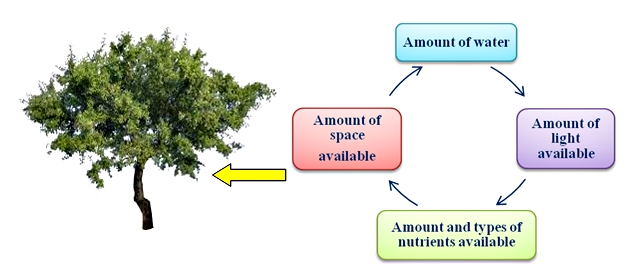Which Is an Adaptation That Helped Plants Survive on Land
Which is an adaptation that helped plants survive on land. Plant adaptations to life on land include the development of many structures a water-repellent cuticle stomata to regulate water evaporation specialized cells to provide rigid support against gravity specialized structures to collect sunlight alternation of haploid and diploid generations sexual organs a.
Plants developed adaptations to survive on land 1.

. This means that when plants became vascular plants they were able to start living on land because the elements of the vascular system helped them take water and nutrients from the soil and in return emit oxygen into the atmosphere around them. Second carbon dioxide is more readily available in air than in water since it diffuses faster in air. Pores for gas exchange 3.
Photosynthesis also allows them to receive energy. Towering trees are the diplontic phase in the life cycles of plants such as sequoias and pines. Fossil records indicate that higher plants evolved from algae Land plants evolved from an algal ancestor.
Next comes strong stem. To balance these survival challenges life on land offers several advantages. Start studying the Mastering Biology Chapter 16 flashcards containing study terms like Can you correctly identify the adaptations that enable plants to survive on land Mutualistic associations of plant roots and fungi are called _____ The _____ helps plants retain water.
A waxy cuticle that covers the outer surface of the plant and prevents drying out through evaporation. Land environment should provide support mineral and nutrition supply and more light. On land however the embryo will be prone to desiccation and seeds are a plants adaption to survive life on land.
This allows them to absorb food water and nutrients through their roots. Plants exhibit an alternation of generations between a 1n gametophyte and 2n sporophyte. Alternation of generations of plants.
Surface to prevent drying out. An adaptation plants have to survive on land is their vascular tissue. What Is An Adaptation That Helped Plants Survive On Land.
Plumbing system to distribute nutrients and water. The adaptation that helped plants survive on land are vascular systems. An adaptation plants have to survive on land is their vascular tissue.
Support to give structure to plant body 4. First sunlight is abundant. The seeds have a pulp that provides the moist environment enclosing the embryo.
The cuticle also partially protects against radiation damage from UV light. All plants have photosynthesis for generating food from minerals. For this purpose roots is the first requirement of land plants.
Water acts as a filter altering the spectral quality of light absorbed by the photosynthetic pigment chlorophyll. Photosynthesis also allows them to receive energy. Memorize flashcards and build a practice test to quiz yourself before your exam.
Feb 15 2018 Development of roots stem and leaves are major land adaptations on land. The adaptations and characteristics which ARE present in nearly all land plants include. This allows them to absorb food water and nutrients through their roots.
In addition seeds have a testaseed coat that drastically lowers the rate of loss of water from the inside of the seed to the environment. Protection of the embryo is a major requirement for land plants.

Plants Adaptations In Different Habitats

Plant Adaptations For Living On Land Prehistoric Earth



0 Response to "Which Is an Adaptation That Helped Plants Survive on Land"
Post a Comment